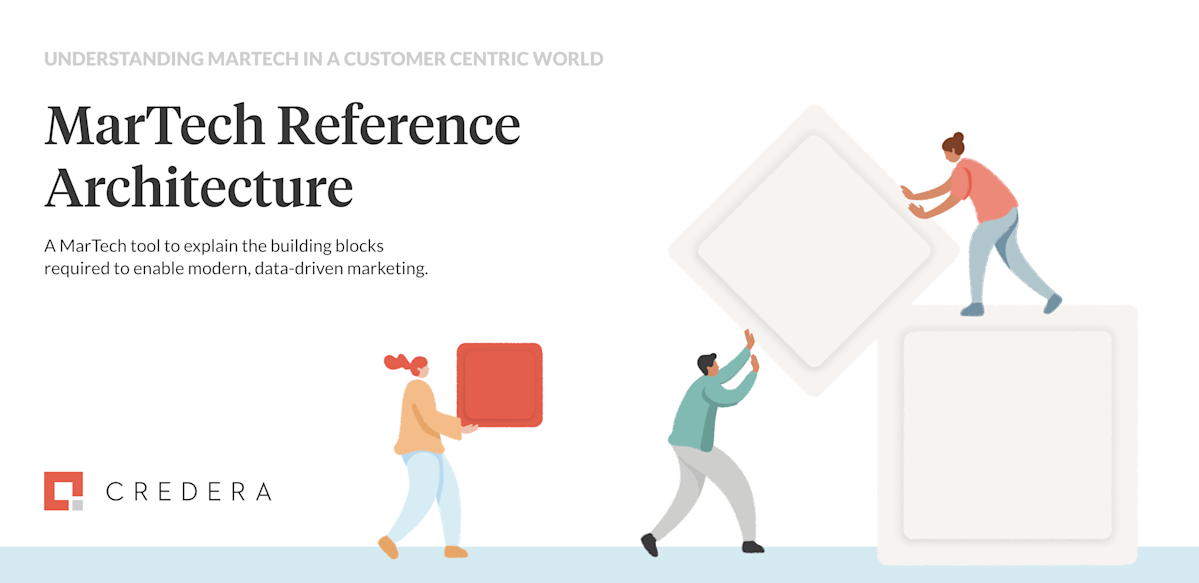Transformation
Aug 28, 2024
Credera’s MarTech Reference Architecture part 4: Content management

In this part of our MarTech Reference Architecture series, we will discuss personalized content at scale enabled through modular, reusable content that is dynamically served to the right customer at the right time through the right channel.

What is content management?
We live in a content-centric world. In today’s digital landscape, it’s increasingly important to not only produce the right content, but to deliver it to the right customers at the right time in order to make lasting impacts and memorable moments. In order to achieve this level of personalization at scale, organizations need to invest in a content management strategy and enabling technology to ensure that content can be easily created, quickly organized, and seamlessly delivered.
A content management system (CMS) is a software platform that enables users to create, edit, archive, collaborate, report, and publish content. While it is vital to recognize that a CMS is needed by marketers to create and organize content quickly, it is ultimately designed to activate best-in-class experiences that meet the expectations and needs of customers. A well-defined CMS should establish content structure and workflows to help marketers create and leverage modular content that supports reusability and efficiency. In addition, a CMS should enable dynamic content delivery through enforcing appropriate meta data and taxonomy rules that will further enable authors to find the right content easily and personalize at scale across multiple channels of user engagement.
Why does content management matter?
A CMS gives you control over your content and shifts the paradigm to make your content work for you. With the proliferation of digital channels and abundance of content needed to engage customers, investing in a CMS that enables your objectives is vital to create winning experiences while maintaining maximum internal efficiencies.
Below are only a few of the many benefits realized from a well-structured and leveraged CMS:
Speed to market – A CMS empowers marketers to easily edit and quickly deliver content to various channels, saving valuable cost and time.
Content reuse – Instead of copy/paste content creation, a CMS enables a “create once, publish everywhere” approach that unifies brand voice and increases efficiencies.
Dynamic personalization – A sophisticated CMS can learn user behavior and preferences and dynamically serve content that will drive outcomes.
Top technologies & players
The content management technology landscape can be daunting to unpack with numerous players and varying types of systems. We’ve provided an overview of the top technology and sample players below to help you get started.

Keys for driving content management maturity
1. Employ a user-first approach
If you’re just getting started with a CMS, it can be tempting to fixate on CMS features alone when comparing and selecting a CMS. However, organizations should take a user-first perspective to defining requirements for their CMS. Utilizing scenario-based user stories to articulate requirements will help you consider both the system users as well as end consumers in order to ensure the system meets all parties’ needs and objectives.
2. Pursue personalization through AI and automation
Personalization and scale should never be mutually exclusive. Content management systems are becoming increasingly advanced in their application of artificial intelligence (AI) to enhance customer experiences in real time. Because AI learns and matures over time, CMS vendors should be architected to integrate multiple AI offerings into its product suite to promote continuous evolution and prevent them from limiting long-term effectiveness.
3. Invest in DAM
A digital asset management (DAM) system is not simply a repository for storing assets. DAM can be a powerful tool to fuel your content creation process and automate processes. Over the years, DAM systems have evolved within the marketing ecosystem to enable visual marketing experiences, experimentation with new formats, and the quest for real-time personalization across channels. As organizations leverage advanced DAM capabilities, it is essential to invest in an overarching strategy, including governance models and change management to support effective growth and transformation.
Current trends and considerations
Flexible content delivery models - headless and hybrid: A headless CMS (learn more in this blog post), which allows content to be created independently of the final presentation layer, frees content to be made readily available to any end experience, while serving as the single source of truth for content and experiences. A hybrid CMS matches the benefits and freedom of a headless CMS and adds classic features for building and managing experiences with ease. The use of headless/hybrid CMS architectures is increasing in popularity due to the flexibility and efficiency it provides to organizations.
Omnichannel delivery: At the heart of personalization is meeting the user where they are. Omnichannel delivery provides seamless and consistent content experiences across the user's journey but becomes challenging with the growing number of channels (e.g., social media, voice technology, etc.) and without proper content management. An efficient and future-proof omnichannel delivery platform is dependent on an integrated ecosystem surrounding the CMS and the right enabling technology to effectively personalize the experience based on real-time customer data.
Up next
Stay tuned for next week’s MarTech Reference Architecture feature: marketing automation and campaign management. In this article, we’ll outline the technology required to plan, manage, orchestrate, and automate marketing campaigns to create remarkable moments for your customers.
Overview of articles in the series:
Part 4: Intelligent Content
Make content work for you
Turn your content into an asset instead of an expense by investing in a thoughtful CMS strategy. We know that leveraging the capabilities of a CMS can be challenging, but we hope this article can be a useful guide to embark on your content journey.
For more information, check out our Intelligent Content series or reach out to us to start a conversation.
Contact Us
Ready to achieve your vision? We're here to help.
We'd love to start a conversation. Fill out the form and we'll connect you with the right person.
Searching for a new career?
View job openings


